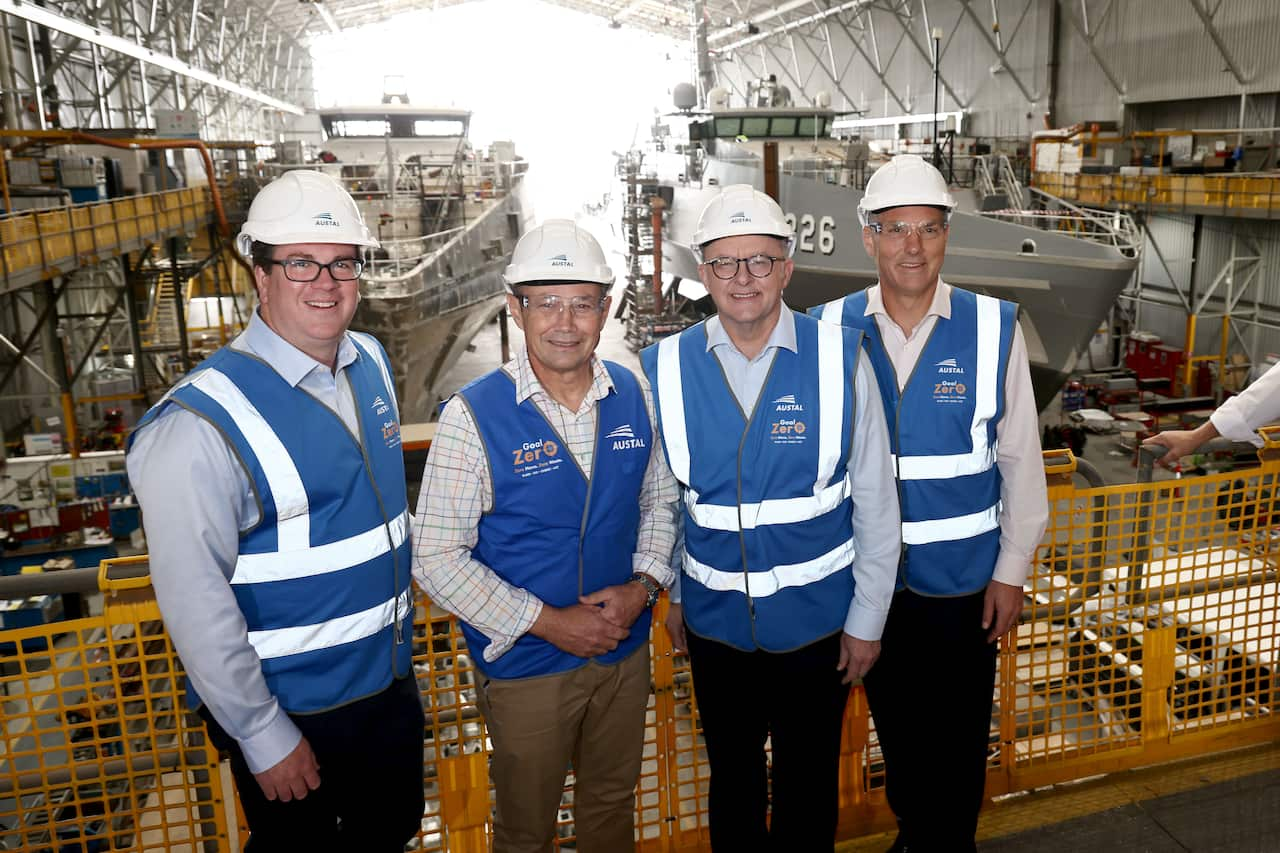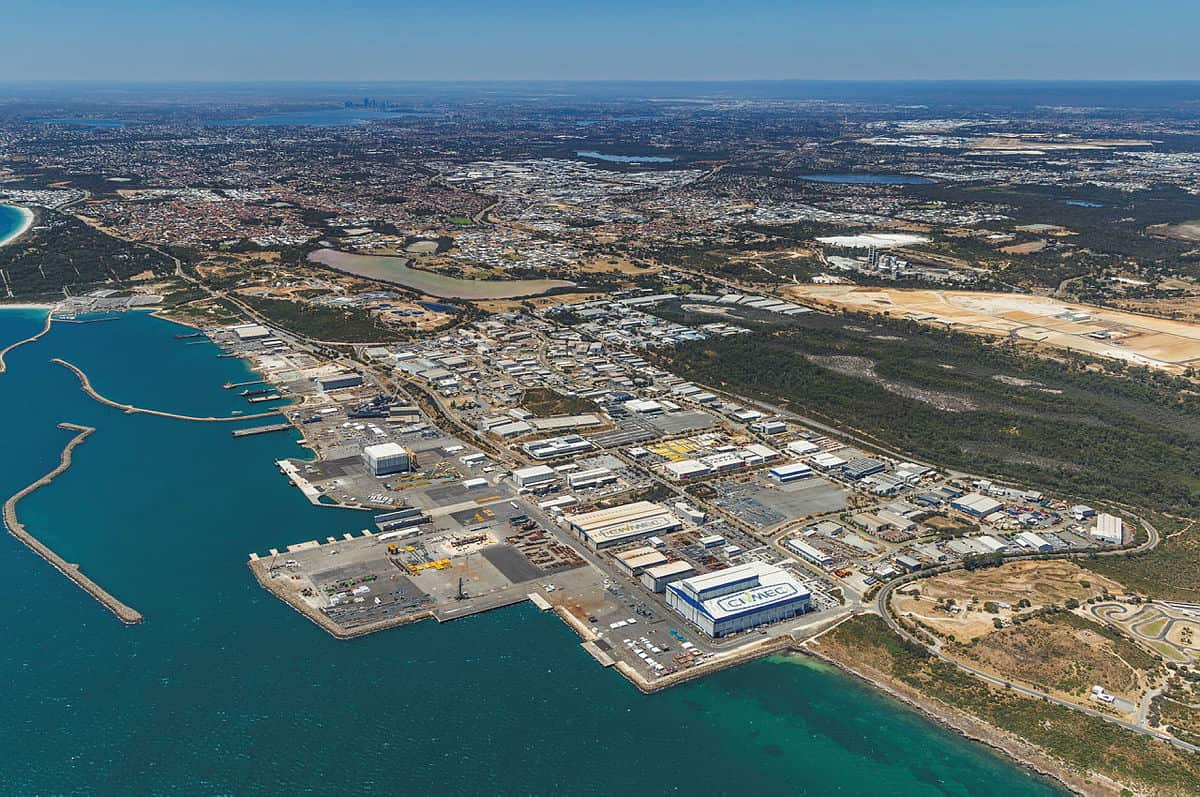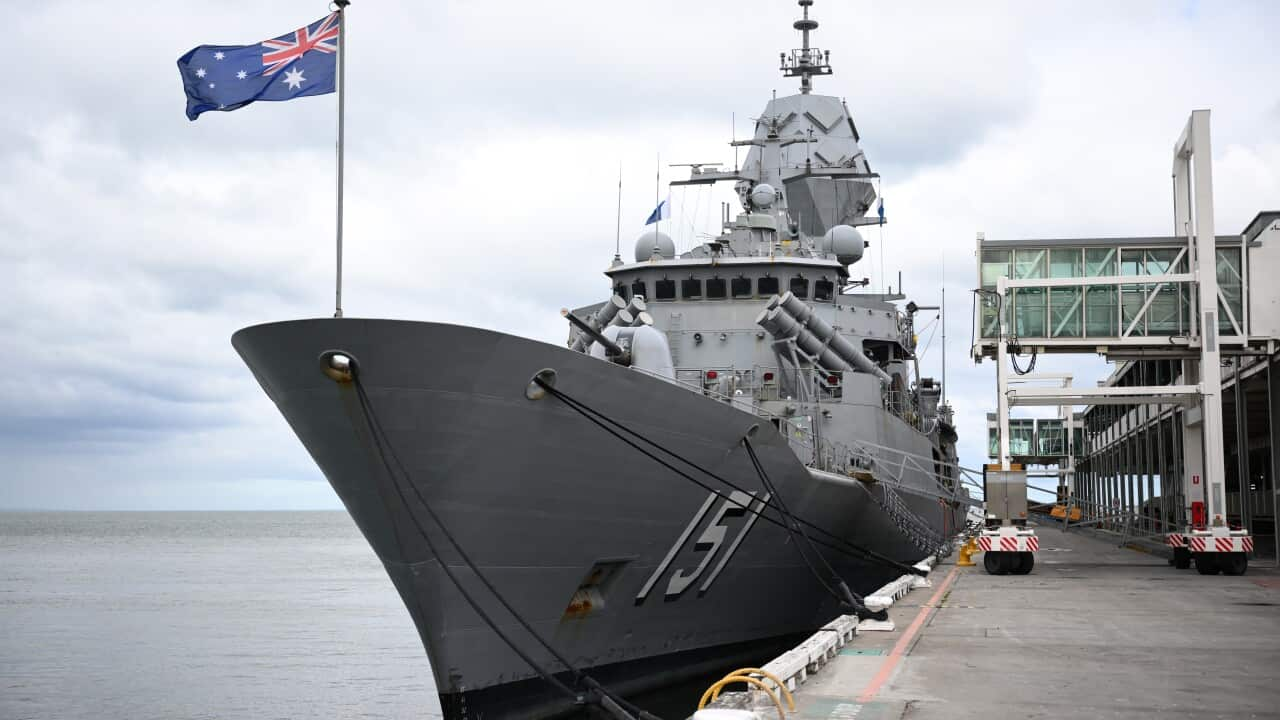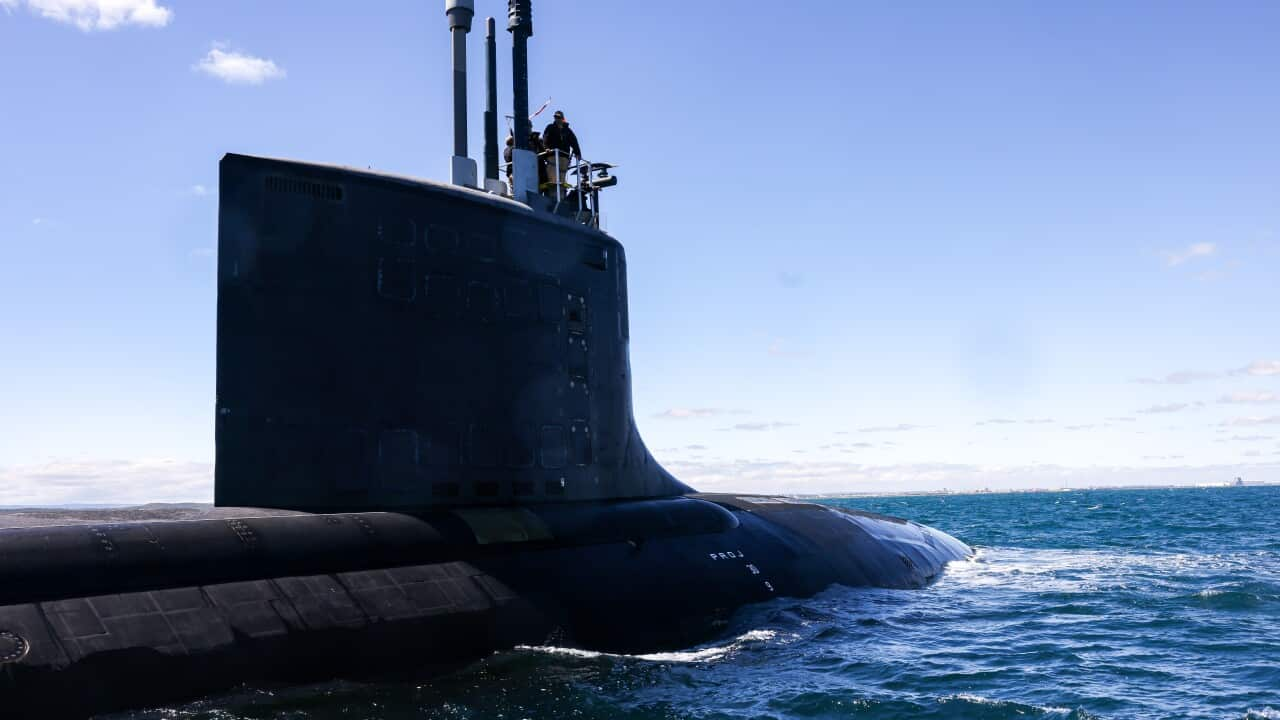The federal government will spend $12 billion to kickstart the development of a "world-class" defence precinct in Western Australia, Prime Minister Anthony Albanese has said.
The facility will advance Australia's shipbuilding capabilities and develop "contingency docking capabilities" for nuclear powered submarines Australia plans to obtain under the AUKUS deal.
"There's no greater honour than serving our country and our nation’s uniform," Albanese said in a Perth press conference on Sunday morning.
"And my government is dedicated to investing in the defence capabilities that our nation requires to keep Australians safe.
"My government has already made record investments across shipbuilding here in the west. And today’s announcement builds on that."
Albanese said "progressing these capabilities is absolutely critical".
What will the $12 billion expansion be used for?
The $12 billion is an initial investment towards building a defence precinct within the maritime hub on Cockburn Sound in Perth's south.
The initial funding will go to kick-starting early works on the Henderson facility while more detailed planning and designs are finalised for the facility that independent planning and advice indicates will cost about $25 billion over the decade, the government has said.
The Henderson facility will be used for the construction of Australian Defence Force surface vessels, starting with army landing craft and then the local construction phase of Australia's future general-purpose frigates.
Facilities will also be built to support surface combat vessels and docking capabilities for conventionally-armed, nuclear-powered submarines from the early 2030s.
Deputy Prime Minister Richard Marles said his government "continues to increase defence spending to record levels to deliver the capabilities Australia needs".
"Henderson will be critical to Australia’s shipbuilding and sustainment industry while supporting continuous naval shipbuilding in Western Australia and Australia’s nuclear-powered submarine pathway," Marles said in a statement.
"I've got no doubt this decision will be welcomed in the United States as it will be welcomed in the United Kingdom, because it is another step forward down the AUKUS path," Marles said at the press conference in Perth on Sunday.
The federal government has continued to dismiss concerns that an ongoing US review of AUKUS threatens the deal.

Deputy Prime Minister Richard Marles (far right) has said the Henderson facility "will provide the place where we will see the building of the Mogami-class frigate in Australia". Source: AAP / Trevor Collens
"This is about being able to sustain and maintain Australia's future submarines but it is very much a facility that is being built in the context of AUKUS," he told the ABC.
Marles said he remained "really confident about the proceeding of AUKUS under the Trump administration", after a visit to Washington last month, during which he met US secretary of defence Pete Hegseth and other officials.
"We did speak about AUKUS in the meetings that I had in Washington a couple of weeks ago, and there was a positive sentiment there about how we're proceeding," he told Sky News television, according to a transcript.
Under AUKUS — estimated to cost between $268 billion and $368 billion — the US will sell several Virginia-class nuclear-powered submarines to Australia, while Britain and Australia will later build a new AUKUS-class submarine.
Before the Virginia-class submarines are received, the Henderson facility will receive "a rotation of US and UK vessels", Albanese said on Sunday.
'Huge opportunity' for the WA economy
The investment in Henderson is set to provide 10,000 jobs in the local Western Australian industry, with Western Australian Premier Roger Cook saying it will be a "huge opportunity" for the local economy.
"We want to diversify our economy, make sure that WA stays the strongest economy in the country," Cook said.
"We want Western Australians to have access to the quality jobs and the business opportunities that come from a diversified economy, and the development of our defence industries is an important part."

The Australian government has said the development of the Henderson facility will support thousands of well-paid local jobs. Source: Supplied / Ventia
The two biggest "winners" from the move are Western Australia and South Australia, Albanese said.
Australia prepares to sign 'historic' defence deal with PNG
The announcement comes as Australia and Papua New Guinea prepare to sign a "historic" defence deal, which will see citizens of the neighbouring Pacific nation able to serve in Australia's military.
The federal government remains tight-lipped on other speculated details.
During Sunday's press conference, Albanese said Australia is "not planning" on garrisoning Australian troops in the country and said it was a refreshment of an "old agreement, which has been in place since 1977".
"Increasingly, we are doing exercises and operations with all of those countries and they, in turn, are doing exercises and operations here in Australia," he said. "I think what we’ll see with the defence agreement that we signed in the coming days is an agreement which speaks to an enormous amount of ambition between our two countries to work even more closely together."
"But the level of ambition that both of us have brought to the table has meant that really, I believe what we’ll be saying in the next few days is a genuinely historic agreement between our two countries."
Marles would not confirm reports that both parties would be required to consult one another if facing a security threat, akin to the requirements spelled out in NATO's Article Four clause.
"The prime minister will be signing this in the next few days, and so I'm going to let the prime minister make those announcements," he told ABC's Insiders on Sunday.
Marles did indicate PNG recruits to the Australian Defence Force would be "managed" to ensure there was no exodus from the neighbouring military. "We need to be careful about how we do that if we're walking down this path with any of the countries in the Pacific, for sure," he said.
The deal comes after setbacks for a security and development deal with Vanuatu, just one of several Pacific contests for influence between Australia and China.
— With additional reporting by the Australian Associated Press and Reuters.
Share



